November 18th, 2016
by Yukiko Matsuoka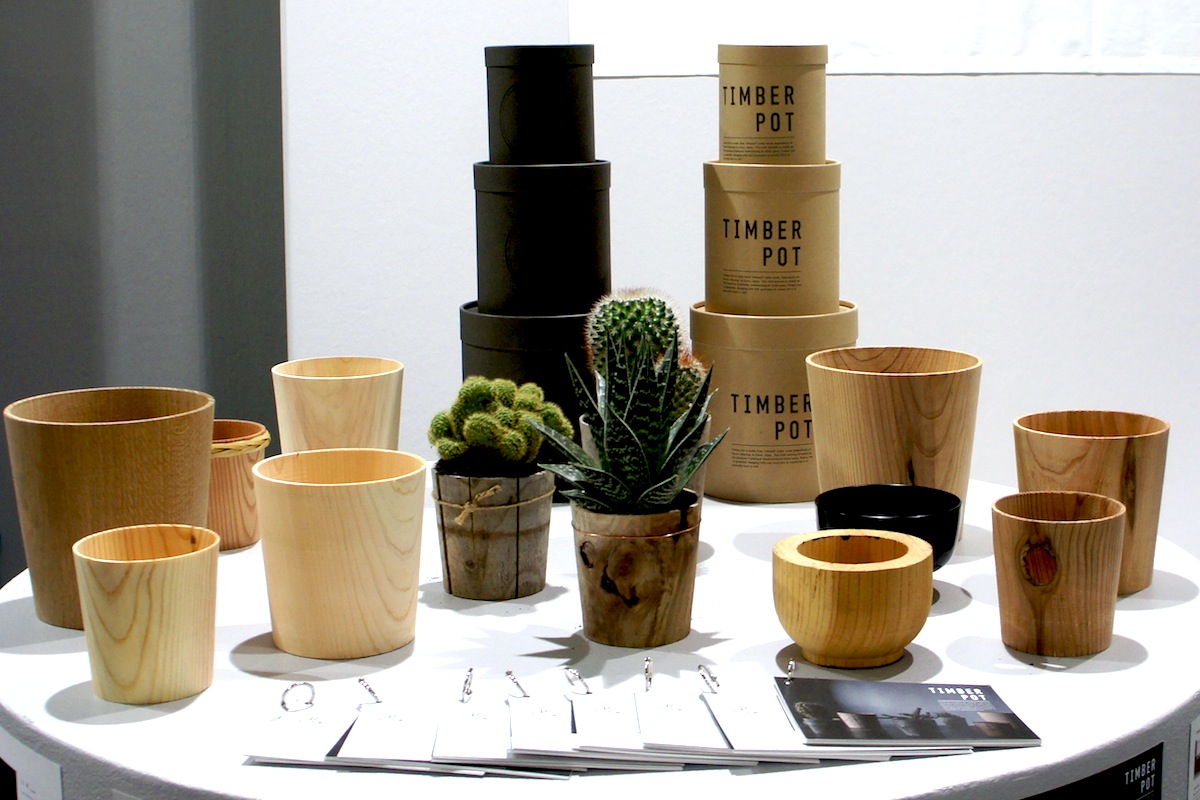

A “Timber Pot” is a wood-turned flowerpot, made from wood “thinned” from sustainable forests. They are created by Yoshio Sakai, a Japanese woodturner in Fukui. As times goes on, these pots gradually change, as tiny scratches and cracks eventually turn them back into soil. Yoshio Sakai was given an award at the Interior Lifestyle Tokyo (IFFT) trade fair in 2015. In February 2016, these Timber Pots were represented at the “Talents”, a promotional program for promising young designers of Messe Frankfurt. It attracted many buyers, journalists and editors from around the world, including major magazines, such as CASA vogue, ELLE DECOR and Monocle. Yoshio’s studio, the ROKUROSHA, is located in Kawada (河和田), a small town in Fukui, Japan, which is known as the home of Japanese lacquerware.
Yoshio’s studio, the ROKUROSHA, is located in Kawada (河和田), a small town in Fukui, Japan, which is known as the home of Japanese lacquerware.
making of ROKUROSHA from kazutoshi hasegawa on Vimeo.
Kawada is surrounded by mountains, where lacquer trees grow naturally. Due to its climate, humidity and nature, Kawada has been a great place to produce lacquerware. It has a history stretching back 1500 years.  Traditional lacquerware is made of wood covered in lacquer. They have been used as tableware for about 9000 years in Japan. They are uniquely shiny, lightweight and durable, last a lifetime, are easy to repair and are functional with Japanese cuisine.
Traditional lacquerware is made of wood covered in lacquer. They have been used as tableware for about 9000 years in Japan. They are uniquely shiny, lightweight and durable, last a lifetime, are easy to repair and are functional with Japanese cuisine. 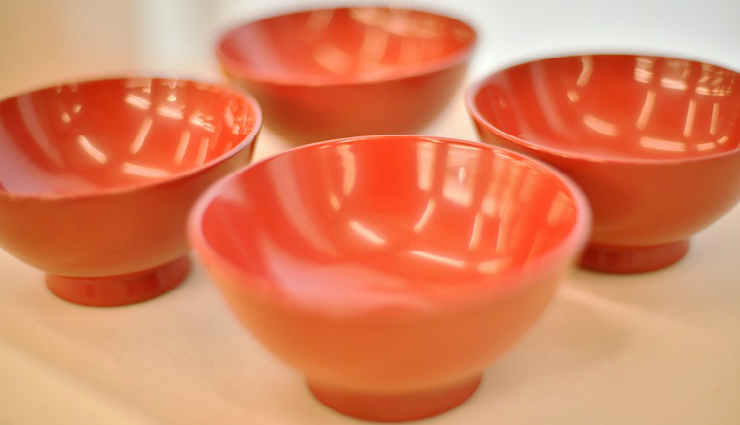 At first, a woodturner scrapes a bowl out of wooden materials.
At first, a woodturner scrapes a bowl out of wooden materials. 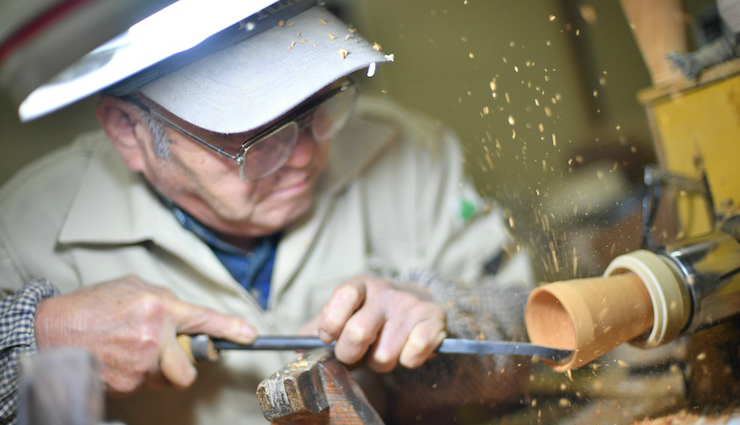 The surface of a bowl is coated with lacquer. It is then dried, polished, and coated again. It gradually grows in luster and beauty.
The surface of a bowl is coated with lacquer. It is then dried, polished, and coated again. It gradually grows in luster and beauty. 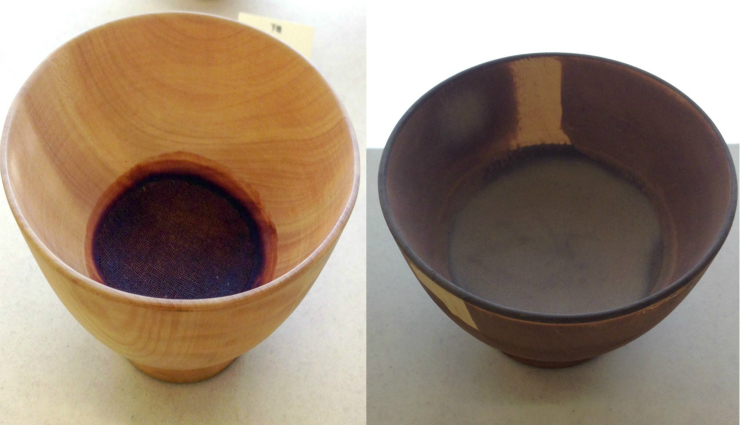 Sometimes a lacquer-covered wooden bowl is decorated with gold or silver.
Sometimes a lacquer-covered wooden bowl is decorated with gold or silver. 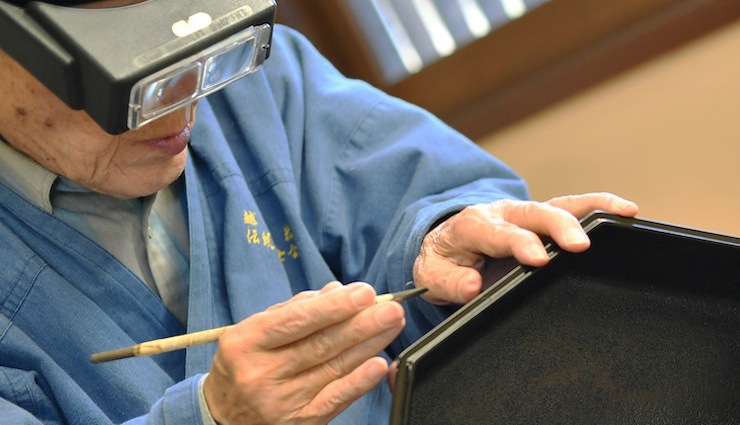 Kawada is not the only mountainous area; over 70% of Japan is mountainous, with less space for forestry. Therefore, “thinning” is the traditional method used to remove some trees from a stand of trees so that the others can have the room and resources enough to grow. Especially, in the years after World War II, trees were planted in large groups throughout Japan. However, after the mid-1950s, the domestic lumber market slumped due to an increase in cheaper imported wood from outside of Japan. Thus, most of those forests have been neglected and uncared for.
Kawada is not the only mountainous area; over 70% of Japan is mountainous, with less space for forestry. Therefore, “thinning” is the traditional method used to remove some trees from a stand of trees so that the others can have the room and resources enough to grow. Especially, in the years after World War II, trees were planted in large groups throughout Japan. However, after the mid-1950s, the domestic lumber market slumped due to an increase in cheaper imported wood from outside of Japan. Thus, most of those forests have been neglected and uncared for. 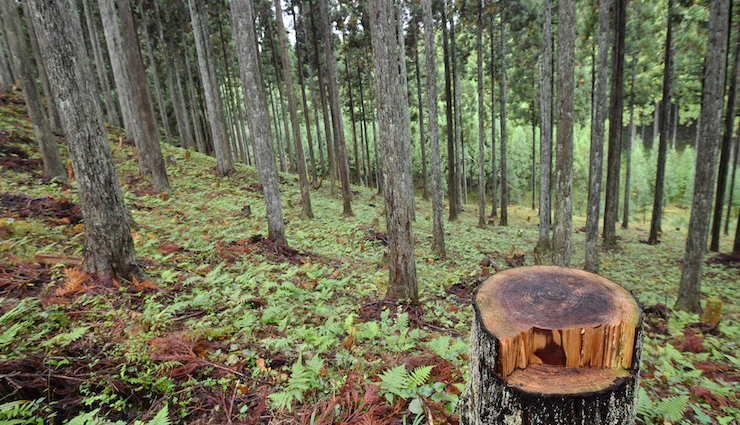 In order to raise awareness of these endangered forests, Yoshio produced a Timber Pot from byproducts of forest thinning, most of which are useless and wasted. He effectively applies the Japanese traditional woodturning technique to its production.
In order to raise awareness of these endangered forests, Yoshio produced a Timber Pot from byproducts of forest thinning, most of which are useless and wasted. He effectively applies the Japanese traditional woodturning technique to its production.  A Timber Pot is just his first step towards creating a sustainable future. Yoshio, who proudly carries the traditions of generations of Japanese woodturners, is also at the forefront of modern Japanese design, creating unique products from wooden and other materials.
A Timber Pot is just his first step towards creating a sustainable future. Yoshio, who proudly carries the traditions of generations of Japanese woodturners, is also at the forefront of modern Japanese design, creating unique products from wooden and other materials.
【抄訳】
『Timber Pot』は、福井のろくろ師・酒井義夫さんが、間伐材からくりぬいてつくった植木鉢。時間の経過とともに、傷や割れなどが生まれて、徐々に変化し、やがて土に還ります。 『Timber Pot』は、2015年、インテリアライフスタイル東京(IFFT)でヤングデザインアワードを受賞し、2016年2月にはドイツ・フランクフルトで開催された国際見本市アンビエンテ(Ambiente)にも招待されました。世界中のバイヤー、ジャーナリスト、編集者から注目され、「CASA vogue」、「ELLE DECOR」、「Monocle」といった一流雑誌にも採り上げられています。
酒井さんが主宰する「ろくろ舎」は、越前漆器の里として知られる、福井県河和田地区にあります。 河和田地区は山に囲まれ、漆が自生する地。気候や湿度、自然が適していることから、河和田地区は、1500年以上、越前漆器の産地となっています。
伝統的な漆器は、木を漆でコーティングしたもので、日本では、およそ9000年前から、食器として使われてきました。つややかに輝き、軽く、耐久性があり、長持ちし、修理できて、和食にとって機能的なのが特徴です。
まず、ろくろ師が、木材から椀を削りだします。
椀の表面に漆を塗り、乾かして、磨いていくと、次第に、光沢と美しさが生まれていきます。さらに、漆を塗った椀に、金や銀で、装飾を施していくこともあります。
山がちな地域は、河和田地区に限らず、実に日本の7割以上が山であり、林業のための土地は少ししかありません。そこで、伝統的な森林マネジメントの手法として、残りの木が生育できるよう木々の一部を間引く“間伐”が行われてきました。
日本では、とりわけ、第二次世界大戦後、大量に植樹されましたが、1950年代半ば以降、より安価な木材が国外から輸入されるようになり、国内の木材市場は冷え込みました。それゆえ、多くの森林が、手入れされないまま放置されています。
このような森林の危機的な状況に目を向けさせようと、酒井さんは、これまで、有効に活用されることなく、廃棄されていた間伐材から、Timber Potを生み出しました。日本の伝統的なろくろの手法を効果的に用いています。
Timber Potは、酒井さんにとって、持続可能な未来に向けた第一歩にすぎません。ろくろ師として伝統的な技術を受け継ぎながら、木などの素材を使って、独創性のあるプロダクトを生み出しています。